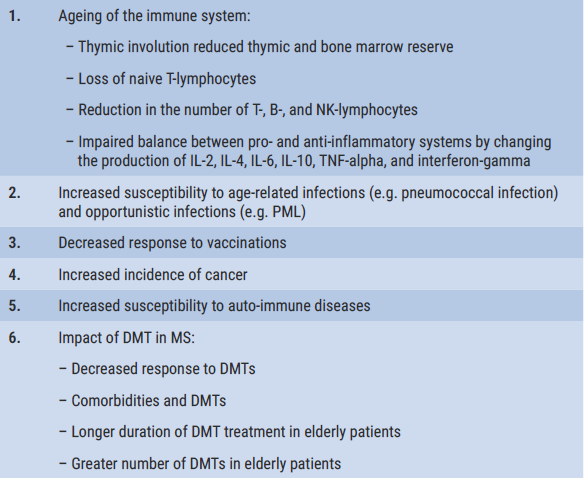Patients with SPMS are often categorised as active (aSPMS) or non-active (naSPMS) based on evidence of their disease activity, explained Prof. Gavin Giovannoni (Queen Mary University of London, UK). However, the relative contribution of MRI activity and/or relapses in defining disease activity is not well understood. Therefore, differences between aSPMS and naSPMS were evaluated. Data was used from the Adelphi real-world MS Disease Specific Programme (Adelphi MS DSP), and the phase 3 EXPAND study (NCT01665144).
Adelphi MS DSP is a non-interventional, real-world study of 37,318 MS patients, including 3,580 patients with SPMS who were surveyed between 2011 and 2019. This group was categorised into aSPMS (≥1 new lesion on the most recent MRI and/or ≥1 relapse in the last 12 months; n=1,889) and naSPMS (n=665). In the 1,651 participants of the EXPAND study, aSPMS was defined as ≥1 relapse in the 2 years prior to screening and/or ≥1 gadolinium-enhancing (Gd+) T1 lesion at baseline. According to this definition, 779 patients had aSPMS and 866 naSPMS.
“In patients from the real-world cohort categorised as having aSPMS, disease activity was more commonly detected via MRI than relapse activity,” Prof. Giovannoni observed. They were considered aSPMS based on relapse status alone (12.6%), on MRI status alone (59.1%), or on both MRI and relapse status (28.3%). In the past 12 months, naSPMS patients had a higher mean Expanded Disability Status Scale (EDSS) score versus aSPMS patients (4.6 and 5.2, respectively), were less frequently monitored with MRI (58.7% vs 87.7%), and had a lower number of MRIs per patient (0.87 vs 1.24). A higher proportion of naSPMS patients had moderate-to-severe disease, and were not on any DMT (45.1% vs 23.4%).
In EXPAND, 52.7% of naSPMS patients on placebo had on-study relapse and/or MRI activity: MRI (41.8%), relapses (4.6%), or both MRI and relapse (9.2%). “What's driving the detection of disease activity in this population is the frequency of MRI monitoring,” said Prof. Giovannoni. He concluded that incorrectly defining patients as naSPMS can result in reduced monitoring and decreases the chance to detect and treat any new disease activity in these patients.
- Giovannoni G, et al. MRI activity versus relapses as markers of disease activity in SPMS: Data from real world and pivotal clinical studies. P001, ECTRIMS 2021 Virtual Congress, 13–15 October.
Copyright ©2021 Medicom Medical Publishers
Posted on
Previous Article
« ECTRIMS/EAN Clinical Guidelines on MS treatment: an update Next Article
Applicability of sNfL measurement in clinical practice »
« ECTRIMS/EAN Clinical Guidelines on MS treatment: an update Next Article
Applicability of sNfL measurement in clinical practice »
Table of Contents: ECTRIMS 2021
Featured articles
Preliminary data shows positive results of ATA188 for progressive MS
COVID-19
MS patients at risk of hampered immune response after vaccination
Immunotherapy in MS does not influence COVID-19 severity and mortality
Anti-CD20 antibodies associated with worse COVID-19 outcomes
ECTRIMS-EAN consensus on vaccination in MS patients
Experimental Treatments
The role of astrocyte phenotypes in acute MS lesions
Promising results of intrathecal MSC-NTF cells in progressive MS
Preliminary data shows positive results of ATA188 for progressive MS
Evobrutinib reduces relapses and MRI lesion activity
Primary endpoint of opicinumab for relapsing MS not met in AFFINITY trial
Elezanumab did not outperform placebo in progressive and relapsing MS
Ibudilast reduced retinal atrophy in primary progressive MS
Treatment Trials and Strategies
ECTRIMS/EAN Clinical Guidelines on MS treatment: an update
Rituximab most effective initial MS therapy in Swedish real-world study
Ublituximab meets primary endpoint for relapsing MS
Dynamic scoring system aids decision to switch MS therapies early
Long-term suppression of MRI disease activity with ocrelizumab
Stopping DMT: when or if at all?
Biomarkers
Early predictors of disability progression in paediatric-onset MS
High-sensitive biomarker detection in MS via novel ELISA assay
Cortical lesions predict cognitive impairment 20 years after MS diagnosis
Applicability of sNfL measurement in clinical practice
MRI more sensitive for disease activity than relapses in SPMS
Imaging
Changes in GABA-receptor binding among cognitively impaired MS patients
T2 lesions independently predict early conversion to SPMS
Natural killer-like CD8+ T cells as a reservoir of clonal cells related to MS activity
Neuromyelitis Optica Spectrum Disorder (NMOSD)
Eculizumab, satralizumab, or inebilizumab for NMOSD?
Long-term efficacy of satralizumab for NMOSD
Long-term efficacy data: inebilizumab for NMOSD
Progressive MS
Charcot Award 2021: Progressive MS, a personal perspective
Top score poster: Meta-analysis on the effect of DMTs
Cortical lesions predict disease progression and disability accumulation
Ocrelizumab shows long-term benefits in primary progressive MS
Other
WNT9B-gene variant associated with doubled relapse risk in MS
Melatonin associated with improved sleep quality in MS patients
“Expanded Disability Status Scale 0 is not normal”
Personality trait alterations in MS patients
Related Articles

September 7, 2023
Immunosenescence and MS: relevance to immunopathogenesis and treatment
November 25, 2020
Modulating BTK-dependent inflammatory signalling in microglia
© 2024 Medicom Medical Publishers. All rights reserved. Terms and Conditions | Privacy Policy
HEAD OFFICE
Laarderhoogtweg 25
1101 EB Amsterdam
The Netherlands
T: +31 85 4012 560
E: publishers@medicom-publishers.com

